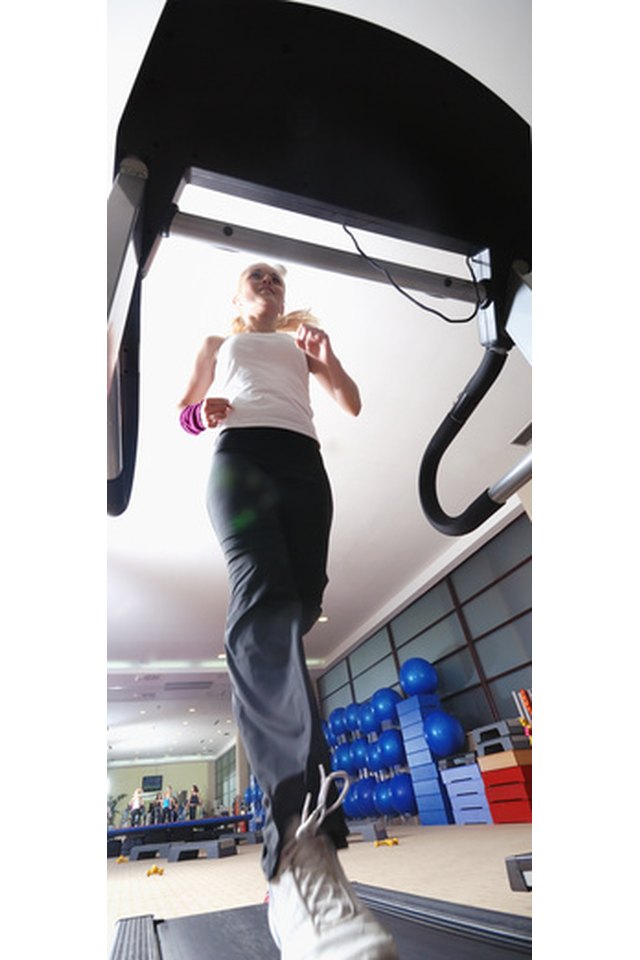Treadmill Exercises to Develop Calves

By nature, the treadmill works the muscles in the calves. To perform more focused, strenuous calf exercises, personal trainers at Critical Bench report that the treadmill must be firmly attached to the floor or have a strong base to support extra weight and shifting positions. Strong calves can assist athletes in various sports, especially those such as football or sprinting where it's important to possess a stronger push-off. Calf definition also is important to those trying to achieve a buff silhouette.
Incline
Most treadmills have a built-in function that allows you to set the front of the walking surface higher than the back. Walking uphill is one of the most effective means to build calf definition and requires focused pushing to engage the calves in every step. To achieve the most defined calves, set the treadmill to the highest incline. Walking uphill on a treadmill requires slow steps. Calf training workouts do not provide enormous cardiovascular benefits and shouldn't elevate your heart rate. Slow walking allows more blood to pump to the calves. Push up with the calf muscles at every step, making sure to keep your back straight and not engage other muscles. The exercise should last for about 5 to 10 minutes, followed by a thorough calf stretching on both legs.
Weights
Adding ankle weights to the treadmill routine can increase the amount of resistance placed on the calves and increases the intensity of the workout. Ankle weights typically are sand-filled bands of nylon that wrap around the ankles and are available in varying weights, usually from less than 1 pound up to 10 pounds. Doctors at the University of Iowa Hospitals and Clinics report that people who have joint problems or degenerative bone disease should not use ankle weights because of the extra stress they place on the joints. Adding weight to the treadmill routine should be done slowly over a period of time, starting with the lowest weight and gradually adding weight as the calves become stronger.
Backward Walk
By letting go of the handlebars, you must utilize the muscles in your legs not only to keep you moving but also to keep your body stabilized and balanced. To work the legs even stronger, turn around on the treadmill and walk backward without holding on to the sidebars. To put the most emphasis on the calves, step backward using the toes first so that your step is toe-heel-toe-heel. If you're using a mechanical treadmill, set the speed on slow until you become accustomed to the necessary balance and pace of walking backward. Increase the speed as your calves become stronger.
References
Resources
Writer Bio
Linda Ray is an award-winning journalist with more than 20 years reporting experience. She's covered business for newspapers and magazines, including the "Greenville News," "Success Magazine" and "American City Business Journals." Ray holds a journalism degree and teaches writing, career development and an FDIC course called "Money Smart."
